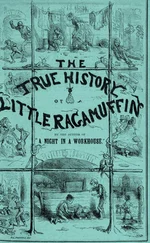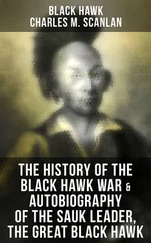The writing bug soon led him to quit the airline and move to Los Angeles, where he met with absolutely no success in the new field of television writing. The industry was, at the time, still centered on the East Coast. This led him to become a Los Angeles policeman, a job which would provide him with insights no office job could ever hope to offer. At the same time, he continued to write, and sold his first script, pseudonymously, in 1951.
More sales followed, including “The Secret Defense of 117,” a science Fiction story which aired on Chevron Theater and starred Ricardo Montalban. During the same period, he wrote speeches for L.A. police chief William Parker, and even ghosted most of Parker’s book Parker on Police , still regarded today as a classic of police philosophy.
Roddenberry managed to slip a bit of his own more liberal views into right-wing Parker’s texts; Parker was often perplexed when people he regarded as left-wingers would enthusiastically applaud his Roddenberry-penned speeches. Despite Parker’s strong political stance, there was a side to him that impressed Roddenberry even more: he was always open to new ideas, and had wide-ranging intellectual interests, traits which Roddenberry would later incorporate into the character of Spock.
By 1954, Roddenberry’s moonlighting was earning him four times his policeman’s salary, leading him to resign from the force and devote all his energies to writing. After freelancing for a variety of series, including Dragnet, Naked City , and Dr. Kildare , he became head writer of the Richard Boone Western series, Have Gun Will Travel.
He began to realize that freelancing left the final product of his mind in the hands of others. To retain control over his ideas (and to retain greater profits), he decided to become a producer. He had seen too many pilots written but left unmade; it was time for him to see one all the way through to completion.
His first series was thus created: The Lieutenant , which ran for the 1963 television season. Starring Gary Lockwood as a newly commissioned officer in the peacetime Marine Corps, this was an intelligent, dramatic series which unfortunately failed to draw much of an audience. (Ironically, another Marine-centered series which premiered the following year was successful enough to last through the rest of the decade. Gomer Pyle was not, however, noted for its intelligence!) One episode featured an actor named Leonard Nimoy as a flamboyant Hollywood director; Roddenberry would eventually employ him again in the new series he was already creating.
By the time The Lieutenant went off the air, Roddenberry had submitted a proposed Star Trek format to MGM, the studio behind The Lieutenant. The basic premise was the one now familiar to millions, but the characters were radically different.
The Captain was one Robert T. April, his executive officer was the logical female Number One, and the navigator was one José Tyler. The doctor was nicknamed Bones but was otherwise an older, completely different character. Mr. Spock was in the proposal, but was described as having “a red-hued satanic look” and, according to one source, absorbed energy through a red plate in his navel!
The Enterprise and its mission are perhaps the only things that made it to the screen unchanged from this original format. One other thing Roddenberry insisted on was that the science fiction in the show be ordered and logical, without falling on convenient fantasy resolutions having no basis in reality.
MGM said it was interested, but not at the present time. Other studios followed suit, providing Roddenberry with a fileful of politely worded brush-offs. A shift in the prevailing winds occurred when he learned that Desilu Studios was looking for series ideas. Desilu, the studio behind I Love Lucy and Lucille Ball’s later shows, was hurting financially; Lucy was its only viable property, and it frequently rented out its facilities to other studios to make up for the monthly overhead costs. Desilu was impressed with Roddenberry and his ideas, including the Star Trek proposal, and signed him to a three-year pilot development deal. (Desilu’s interest in Star Trek would pass over to Paramount Pictures when Paramount bought the television studio out.) Things seemed to pick up steam almost immediately, as Roddenberry was called in to pitch Star Trek to an assembly of CBS’s highest-ranking network executives.
They listened for two hours. Roddenberry was convinced that he’d sold them on it. They were certainly interested in his thoughts on saving costs and designing ships, among other things, but their questions turned out to have another motive entirely. When he was finished, they thanked him politely, but passed on the proposal, as they already had a science fiction series of their own in the works. Roddenberry may very well have inadvertently helped them launch Lost in Space , which even, by some coincidence, had the Robinson family embarking on a five-year mission of exploration. Lost in Space premiered in 1965 and, like Star Trek , ran for three seasons.
Roddenberry, even though disheartened by CBS’s cavalier treatment of him, kept on trying. In May of 1964, NBC offered Roddenberry twenty thousand dollars in story development money. The deal was that Roddenberry would develop three story ideas for a Star Trek pilot, then write a pilot script based on the idea chosen by the network. NBC chose the story entitled “The Cage.” Roddenberry set to work on a shooting script. In September of 1964, the script was approved: the first Star Trek episode had received the green light.
Roddenberry had already been laying the groundwork for this. Of primary importance was the starship Enterprise itself, which he hoped to have avoid all previous spaceship clichés.
The final design of the U.S.S. Enterprise was largely the work of assistant art director Matt Jefferies, who had a strong background in aviation.
During World War Two, Jefferies flew B-17 missions over Africa, and later devoted much of his spare time to restoring vintage airplanes. The starship and its various sets were drawn from Jefferies’s own familiarity with aeronautics.
As a member of the Aviation Writers’ Association, Jefferies was able to collate a large number of designs from NASA and the defense industry … all as examples of what not to do. All previous science fiction spaceship designs were also held up as things to be avoided.
Hundreds of sketches were made for the design of the Enterprise ; the main hull was, at one point, going to be spherical, and even the now-familiar final design almost wound up being shot upside down. (Admittedly, this wouldn’t make much difference in space.) As a final touch of authenticity, red and green lights were added on the port and starboard sides, a time-honored nautical practice. Finally, a three-foot and fourteen-foot model of the Enterprise were constructed.
Again, Matt Jefferies’s air force engineering background came in handy in the design of the sets. The U.S. Navy was so impressed by the bridge design that it supposedly used it as a basis for one of its own communications centers.
Another seemingly insurmountable problem revolved around Roddenberry’s desire to feature a green-skinned woman in the pilot. For some reason, all the makeup department’s experiments failed to show up on the test footage shot of actress Susan Oliver for this purpose. No matter how dark they made the green, their model always showed up on film as looking perfectly normal. Eventually, they discovered that someone at the photo lab, perplexed by the pictures coming his way, was chemically correcting what he thought was a flaw in the initial photography. When this was cleared up, the desired makeup effect was achieved with a minimum of fuss.
Читать дальше












